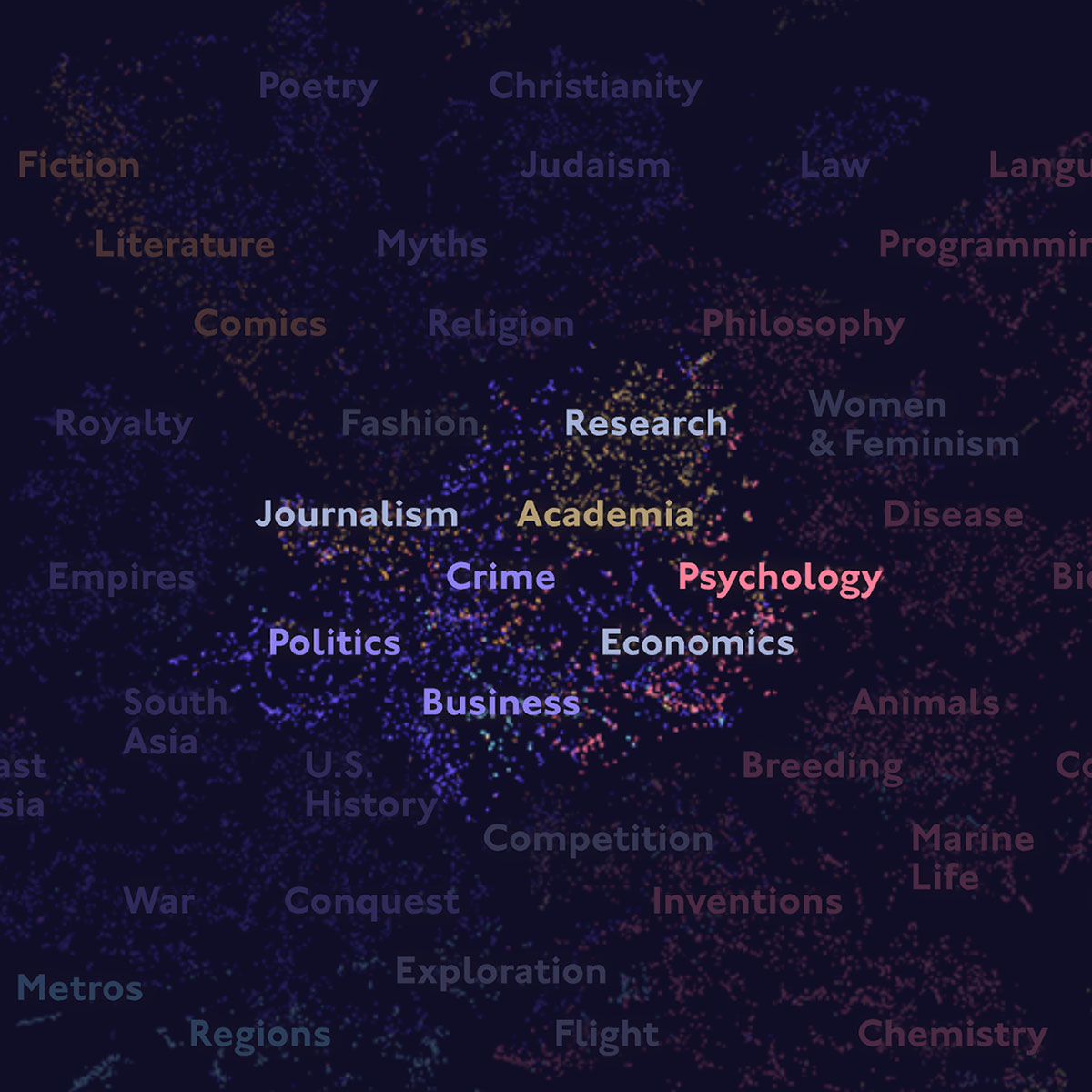Laniakea
Laniakea is a tool we built at Fathom for visualizing and exploring massive document archives. It analyzes the textual relationships between millions of documents to produce an interactive landscape of that body of knowledge — clustering together interrelated concepts, entities and research topics.
I collaborated with the rest of the Fathom team to build this software from scratch. As the designer, I created the visual system and identity, developed ways to navigate and interact with the complexity of the data, and designed the layout of two versions, one for the web and a larger-scale installation.
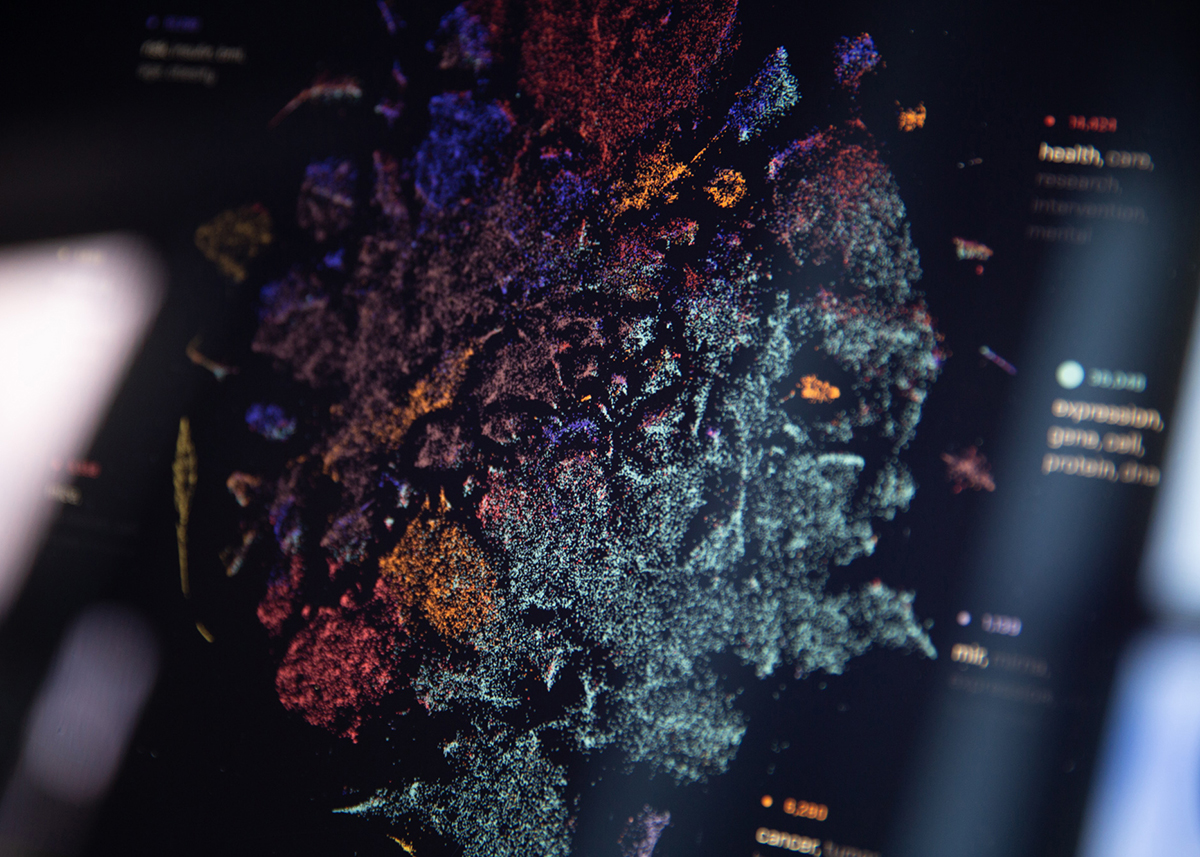
Each dot displayed in this map represents an individual document in the archive, with its proximity to other nodes based on textual analysis and topic modeling. Alongside these strategies, we developed a custom approach for grouping and color coding the map to clearly highlight the overarching concepts.
The densely detailed maps that emerge from this process offer a way to uncover new ideas adjacent to your area of curiosity or research.
Unlike using search terms to retrieve increasingly narrow sets of matches, Laniakea helps you see beyond what you already know and find the unfamiliar threads running through a familiar domain.
Examples featured on this page are maps of the top articles in English-language Wikipedia (~37000 documents). We’ve run the tool to visualize a number of corpora, including a subset of PubMed (~100,000 documents).
Visualizing this knowledge also illustrates the inherent bias embedded in the way people catalog, share and talk about information.
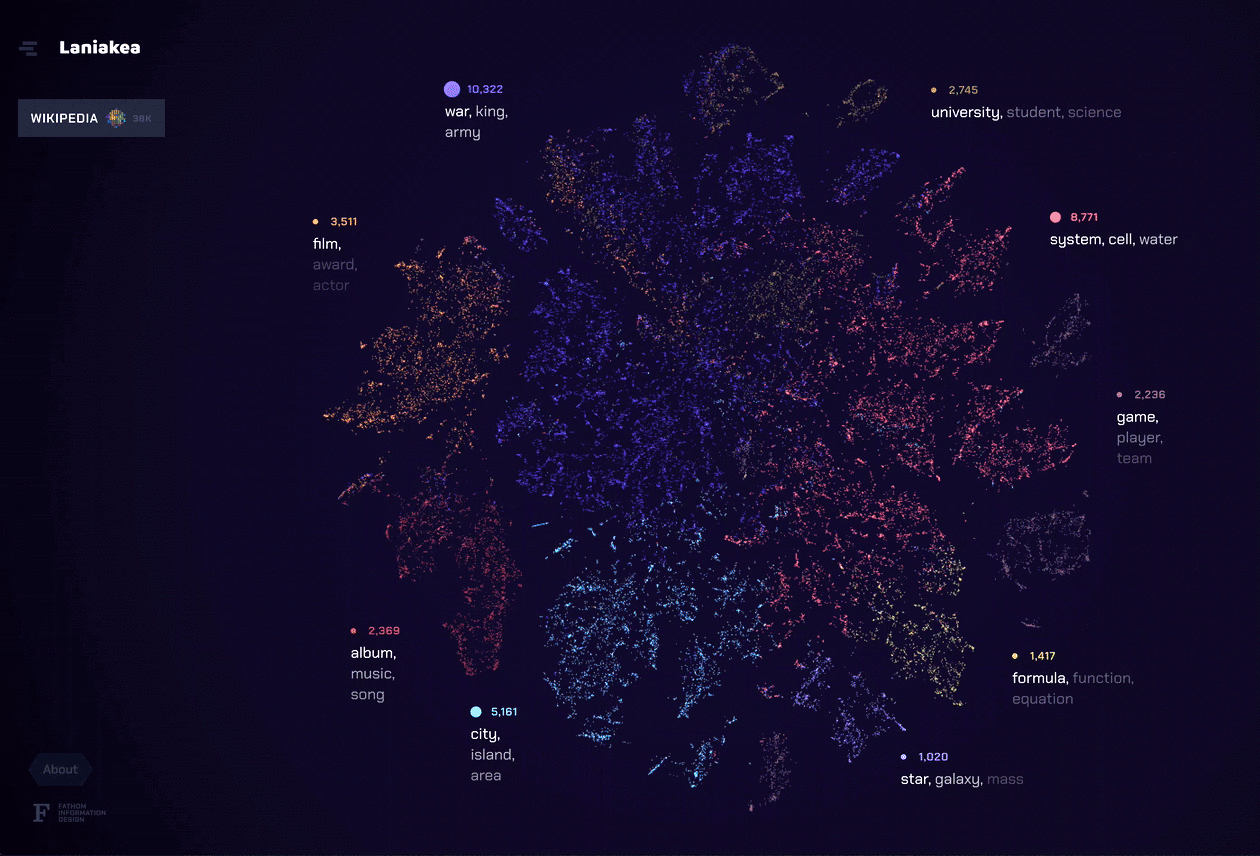
Here, I mapped the conceptual regions across Laniakea’s map of English-language Wikipedia. What emerges is not some pure, abstract schematic of the universe — instead, it shows what a relatively small set of contributors are reading, writing and thinking about.
There is a fascinating and flawed set of priorities and interests that shape these regions of knowledge, orbiting around (in this case) Western culture and a corresponding worldview.
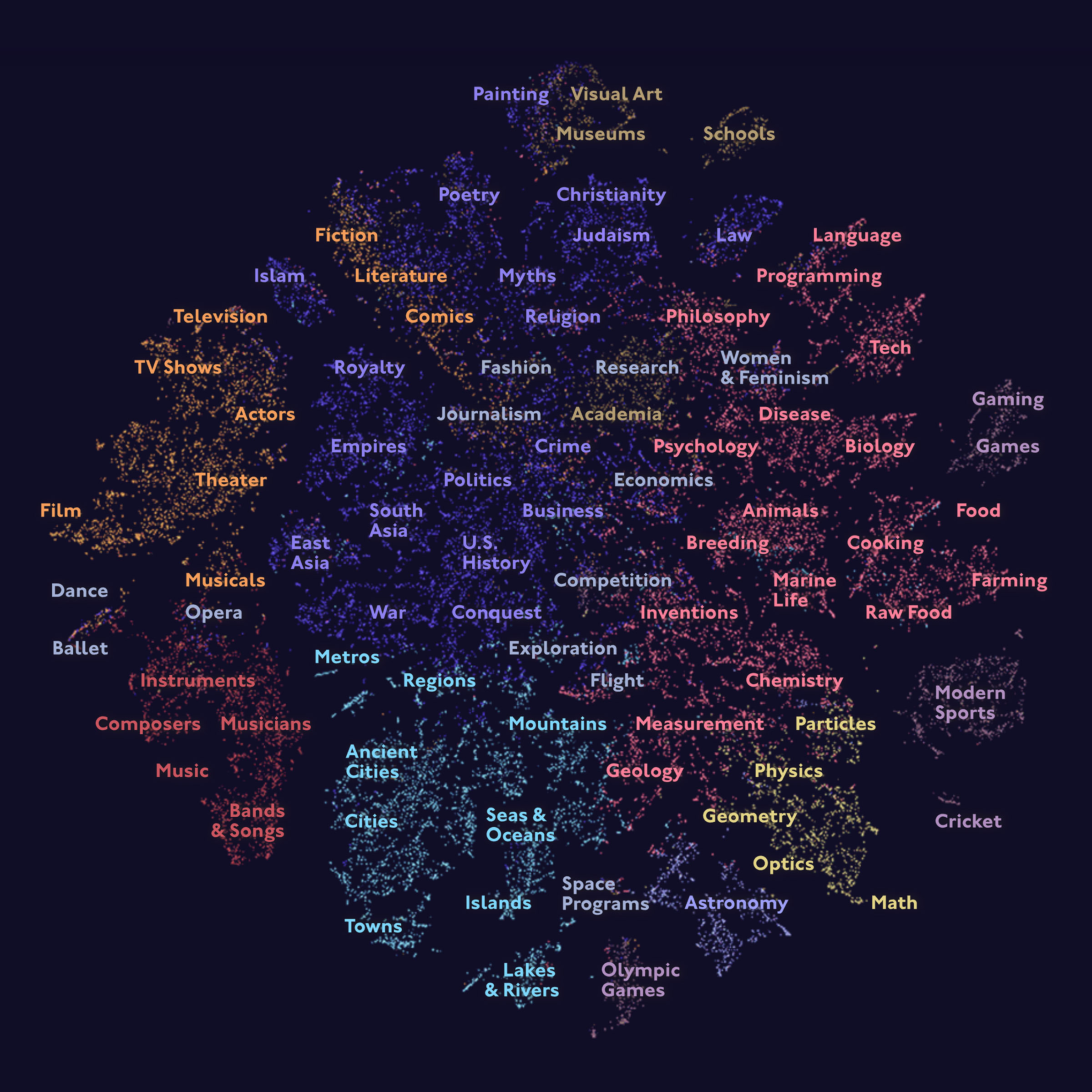
These priorities can be seen in the dominance of articles about royalty, empires, wars and colonization, with a few thousand Wikipedia pages dedicated to castles in England, Ireland and Scotland alone.
In terms of worldview, the segregation of the topic of ‘Islam’ as an island, floating off the mainland, indicates how the perspective of the archive is mainly directed outward from a Western and Christian standpoint.
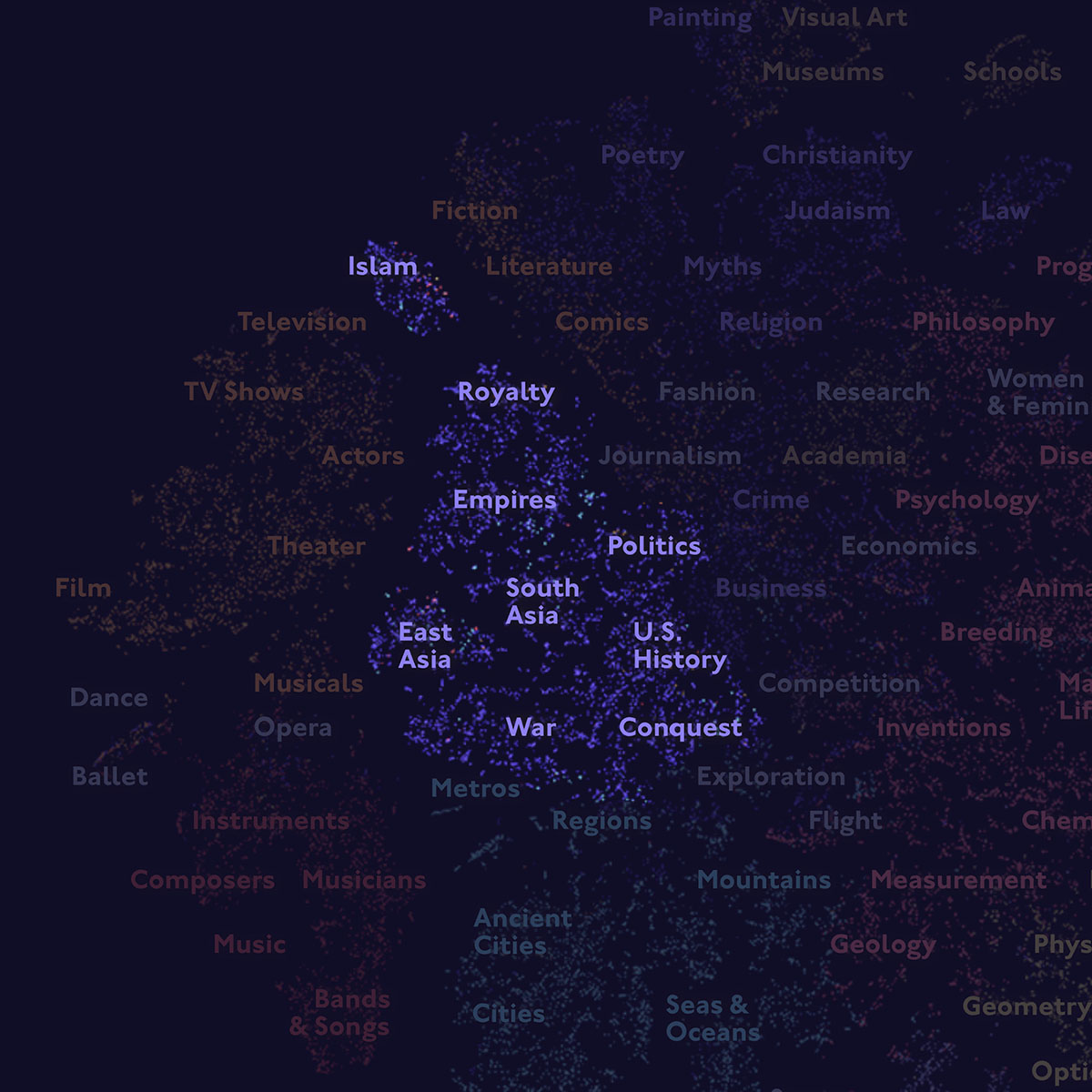
Islands in the map also suggest highly interconnected articles about more specific topics and subcultures, producing tighter networks within the larger one.
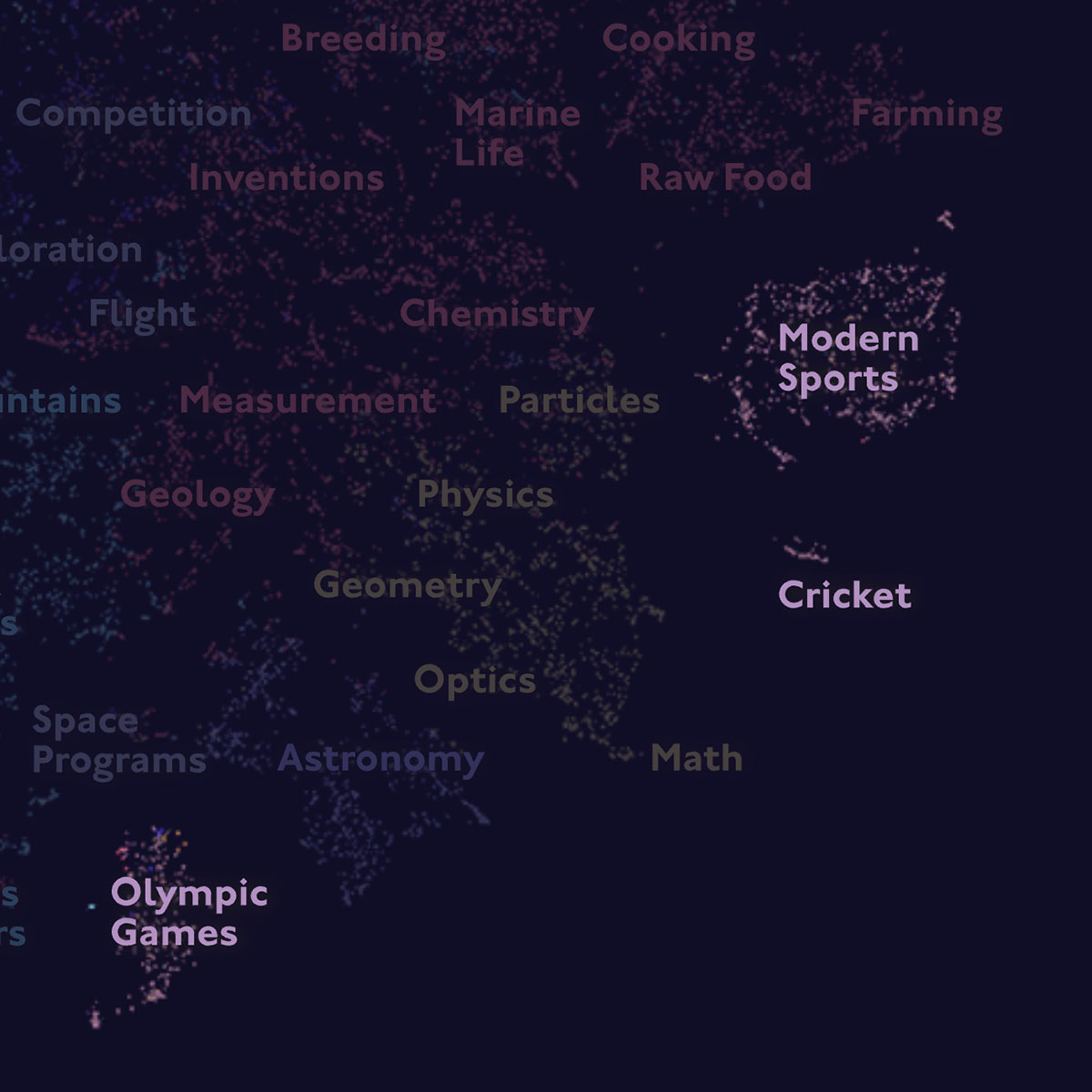
Conversely, there are interior regions where categories blur together — sometimes in provocative combinations.
The intersection between Politics, Crime and Academia here is particularly interesting.
